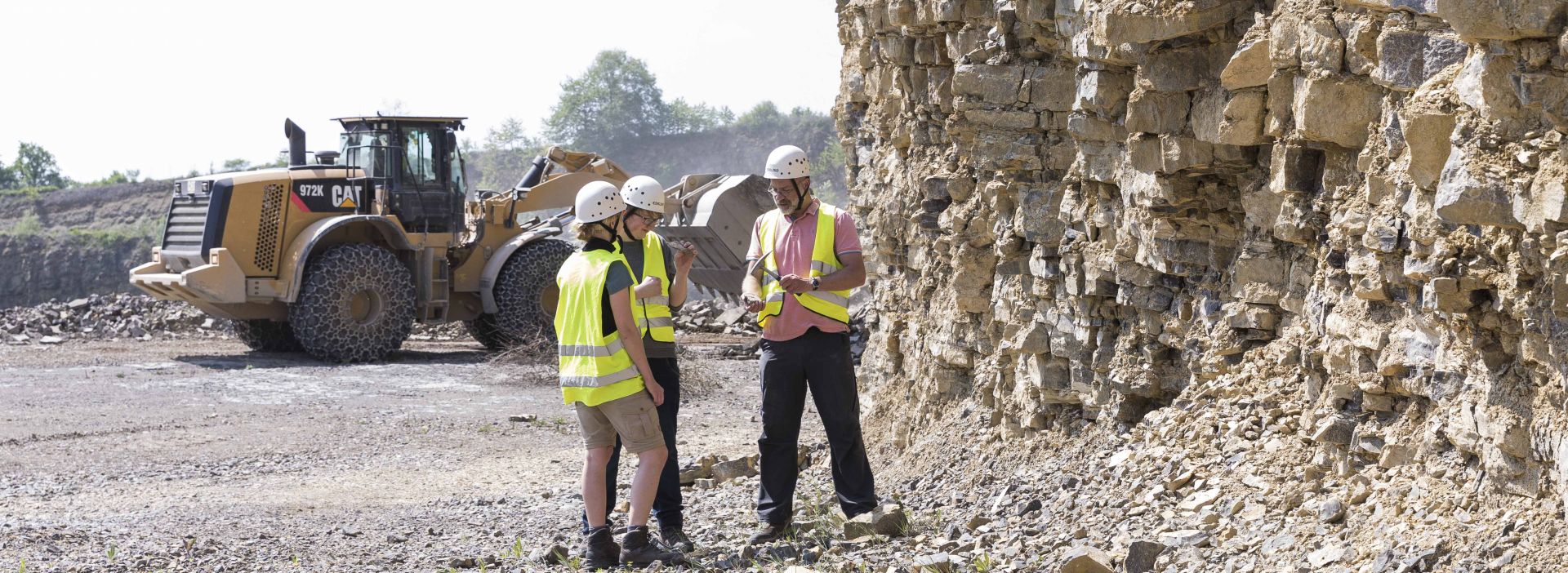Structural Geology @ KIT Applied Geosciences
 The growing world population and global welfare, energy transition, mobility transition and climate change require new concepts of sustainable energy- and raw material supply as well as resilient supply chains. The chair of Structural Geology headed by Christoph Hilgers improves models on mechanical and chemical rock properties as well as rock magnetics to better predict heterogeneities of reservoirs and storage sites in the subsurface. We analyze processes, techno-economical utilization concepts and value chains for energy and mineral resources to identify strategic alternatives. Our innovations contribute to the efficient exploration and use of renewable energy, hydrocarbons, raw materials and subsurface storage.
The growing world population and global welfare, energy transition, mobility transition and climate change require new concepts of sustainable energy- and raw material supply as well as resilient supply chains. The chair of Structural Geology headed by Christoph Hilgers improves models on mechanical and chemical rock properties as well as rock magnetics to better predict heterogeneities of reservoirs and storage sites in the subsurface. We analyze processes, techno-economical utilization concepts and value chains for energy and mineral resources to identify strategic alternatives. Our innovations contribute to the efficient exploration and use of renewable energy, hydrocarbons, raw materials and subsurface storage.
News
Am 26.4.2024 verteidigte Felix Allgaier erfolgreich seine Dissertation und ist nun Dr. Felix. Herzlichen Glückwunsch! Felix Dissertation beschäftigte sich dem Reaktivierungspotential von Brüchen und Störungen.
Am 25.4.2023 verteidigte Jonas Greve erfolgreich seine Dissertation und ist nun Dr. Jonas. Herzlichen Glückwunsch. Jonas Dissertation beschäftigte sich mit den Reservoireigenschaften von Sandsteinen im Ruhrgebiet.
Am 23.4.2024 verteidigte Bruno Mendes erfolgreich seine Dissertation und ist nun Dr. Bruno. Herzlichen Glückwunsch. Brunos Dissertation beschäftigte sich mit der Gesteinsmagnetik und wurde von Prof. Dr. Agnes Kontny betreut.
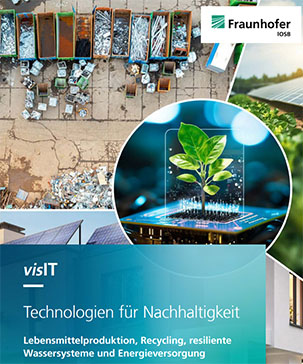
Im neuen visIT vom Fraunhofer ISOB berichten wir über die Möglichkeiten der kontaktfreien Identifikation von Mineralen und Gesteinen.
Link zu visIT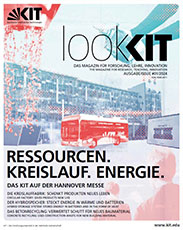
Im neuen LooKIT 01/24 werden die wichtigen Themen Ressourcen, Energie und Kreislauf zusammengedacht. Eine Energiewende braucht eine Rohstoffwende, eine Kreislaufwirtschaft braucht Energie und Rohstoffe. Unvermeidbare Emissionen können im Untergrund gespeichert werden, so Chris auf Seite 9.
Link_more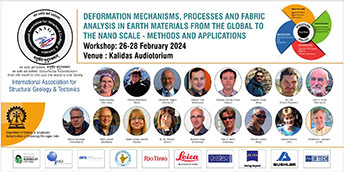
Profs Agnes Kontny and Christoph Hilgers participated in the workshop “Deformation Mechanisms, Processes And Fabric Analysis In Earth Materials From The Global To The Nano Scale – Methods And Applications”, and where funded by the Alexander von Humboldr foundation. The Workshop of IASGT was convened by Professor Manish A. Mamtani (President, IASGT) at the Indian Institute of Technology (IIT) Kharagpur (India) from 26-28 February 2024, who is also an AvH-Fellow, jointly working with us at KIT.
Link to IASGT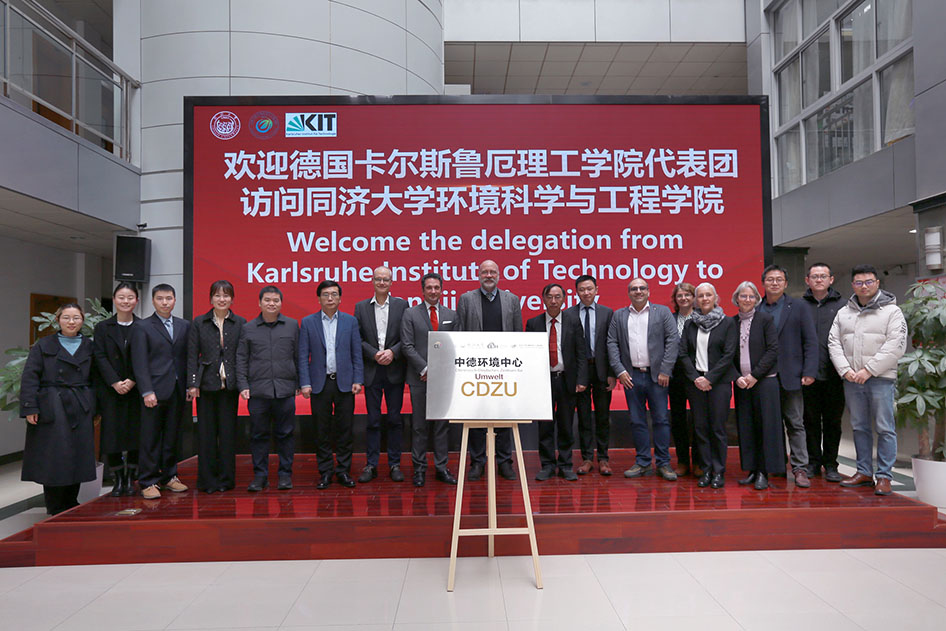
Profs Agnes Kontny und Christoph Hilgers besuchten mit einer Delegation des KIT im Januar 2024 die Kolleginnen und Kollegen der Tongji Universität in Shanghai, um die Möglichkeit gemeinsamer Forschungsprojekte im Bereich Klima und Umwelt zu eruieren. Bereits 2023 würde das Chinesisch-Deutsche Zentrum für Umwelt CDZU an der Tongji gegründet, bei dessen Eröffnungszeremonie sich Chris als derzeitiger Sprecher des Zentrums Klima & Umwelt ZKU mit einem Grußwort und als Podiumsdiskutant beteiligte.
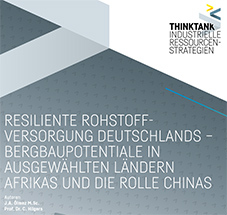
Unsere neue ThinkTank IRS Publikation zu Rohstoffen in ausgewählten Ländern Afrikas wurde veröffentlicht. Weitere Infos zum ThinkTank IRS finden Sie hier.
Link_moreUnter Leitung von Jasemin Ölmez und Dennis Quandt führte uns eine geologische Exkursion nach Marokko. Unterstützt von unseren Kollegen Profs. Moha Ikenne, Icame Nourissaid, Alaeddine Belfoul analysierten unsere Studierenden die Kliffs um Agadir und die Lagerstätten des Landes.
Es gibt viele industrielle Prozesse, bei denen es sich nicht vermeiden lässt, dass CO2 entsteht – wie etwa bei der Zementherstellung. Das CO2 kann durch technische Verfahren abgetrennt und über eine Transportinfrastruktur in den Untergrund eingebracht werden. Dort kann es dauerhaft gespeichert werden. Wo CCS sicher möglich ist, hat die Bundesanstalt für Geowissenschaften und Rohstoffe bereits Anfang des Jahrtausends umfassend untersucht.
Link zur Pressemitteilung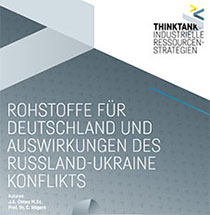
Unsere neue ThinkTank IRS Publikation finden Sie hier, und weitere Infos zum ThinkTank IRS hier.
Link_more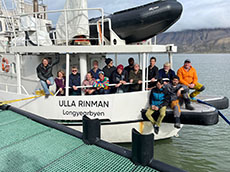
Gase, die wohlmöglich aus dem Erdmantel entlang von Transfer-Störungszonen an der Erdoberfläche gelangten, untersuchte Prof. Dr. Agnes Kontny während einer Expedition nach Spitzbergen. Vorher lernten die Forscherinnen und Forscher, wie man sich gegen Eisbären verteidigt und im eisigen Polarmeer überlebt. Mehr von Agnes und warme Quellen in der Nähe des Nordpools auf S. 61 von LooKIT.
Link zum Bericht in LooKIT 4/24 S. 61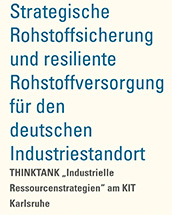
Auf dem Ressourceneffizienzkongress 2023 in Stuttgart sprach Chris zu "Geopolitische Rahmenbedingungen und Rohstoffverfügbarkeit" in unserer ausgebuchten Session vom THINKTANK Industrielle Ressourcenstrategien. Herzlichen Dank an meine Coautorin Jasemin Ölmez. Kurzgefasst: -Japan, Südkorea, USA machen aktive Rohstoffpolitik, auch im Ausland, und haben im Inland strategische Rohstofflager ... die EU und D (noch) nicht. - Es gibt keinen Rohstoffmangel, aber einen Verfügbarkeitsmangel ... für die EU und D. - #Recycling und Kreislaufwirtschaft sind auszubauen, reichen aber ohne Bergbau nicht - Rohstoffpartnerschaften zum Bergbau würden helfen, brauchen aber saubere Technologie & Menschen die sowas können - und: die heimischen Rohstoffe nicht vergessen!
Link_more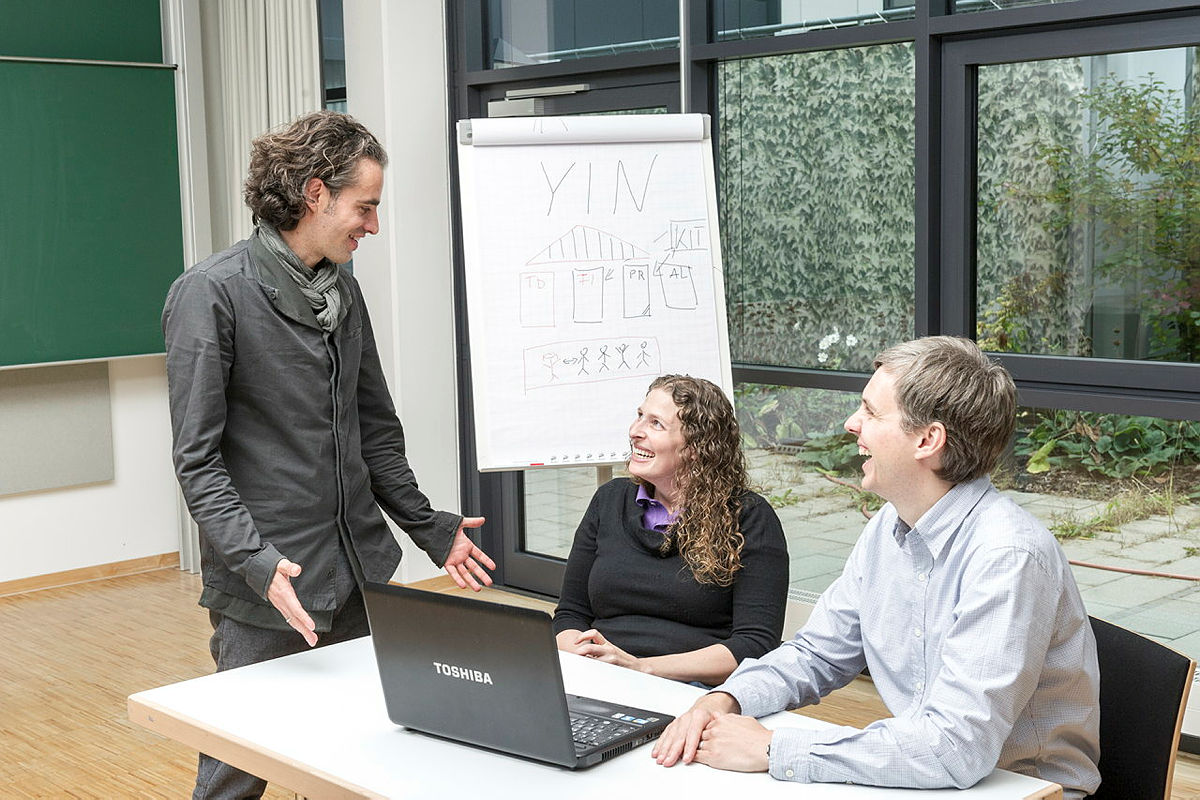
Research assistant (75%) searched for DFG-funded project "Emplacement conditions of pyroclastic deposits inferred from magnetic properties of the Eger maar-diatrem and Eifel volcanoes".
Application deadline: 11.04.2023
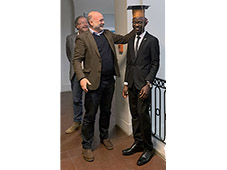
Olajide Jonathan Adamolekun i.e. Ola successfully defended his research on "Reservoir quality controls and reservoir modelling of continental to transitional shallow marine sedimentary basins of Southern Nigeria" on 22.12.2022. It covered reservoir quality assessment such as petrophysics and diagenesis on the core scale, as well as modeling with Petrel on the reservoir scale. Congratulations, Ola! And many thanks to the second reviewers M. Peter Süss and Nevena Andric Tomasevic, the examination committee and DAAD for funding him.
LinkedIn Post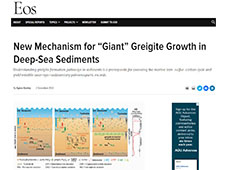
Agnes, Associate Editor of AGU's prestigious Journal of Geophysical Research: Solid Earth, published an editor highlight on New Mechanism for “Giant” Greigite Growth in Deep-Sea Sediments. Understanding greigite formation pathways in sediments is a prerequisite for assessing the marine iron-sulfur-carbon cycle and yield reliable near-syn-sedimentary paleomagnetic records.
Link zu Agnes Editorial Highlight 12/22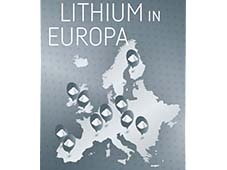
Our new book in the series ThinkTank Industrial Resources Strategies on "Lithium in Europe" (in German) has been published 12/22. Many thanks Katharina Steiger for organizing, writing and managing the co-authors. Please download the book following the link below and find the .pdf und Volltext on the upper right of that site.
Link ThinkTank irs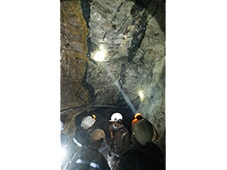
Veins in Precambrian carbonate rocks brought us to South Morocco, where we jointly visited a subsurface mine with our colleagues from Ibn Zhor University Agadir in 12/22. About 300 m below ground veins containing copper are mined, concentrated and shipped to ... China. (as almost any mined deposit anywhere). Question: Where to find the displaced veins, and how do the vein generations fit into the tectonic regimes.
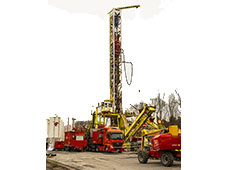
Only 20 km NNE of Karlsruhe the first of two wells has been successfully drilled to more than 3400 m depth in 11/22. We thank Deutsche ErdWärme GmbH for the kind invitation and wish them ongoing success.
Info Geothermie Graben-Neudorf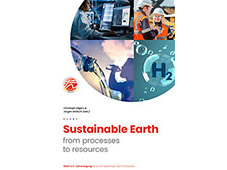
The special volume of our conference Sustainable Earth - from Processes to Resources was published in Sept 2022. The hybrid annual DGGV conference with 667 participants form 36 countries was hosted at KIT from Sept. 19.-24.2021. The organization committee Jochen Kolb, Agnes Kontny, Frank Schilling, Armin Zeh and Chris (chairman) thank DGGV e.V. for funding this volume (in German), which can be downloaded here.
Download Booklet Sustainable Earth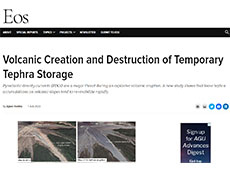
Agnes, Associate Editor of AGU's prestigious Journal of Geophysical Research: Solid Earth, published an editor highlight on Volcanic Creation and Destruction of Temporary Tephra Storage. Pyroclastic density currents (PDCs) are a major threat during an explosive volcanic eruption. A new study shows that loose tephra accumulations on volcanic slopes tend to re-mobilize rapidly.
Link zu Agnes Editorial Highlight 7/22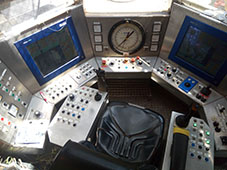
The potential lack of natural gas supply (27%) in Germany would pose some significant challenges on economy and society in the coming years - it is an industrial raw material as and energy supply. Planned LNG volumes and rates (13 bcm/a) will not match recent demand. Imported LNG fracking gas, coming with a high CO2 footprint, could be supplemented by the utilization of Germany's own fracking gas of appr. 1,36 tcm with a low CO2 footprint, and assisted by CO2 capture, storage and utilization. In interviews with Frankfurter Allgemeine Sonntagszeitung, Deutsche Welle, Deutschlandfunk, Weltwoche and others Chris states that it is an established technology applied a million times. Whether or not Germany considers its own natural resources to be an additional backup strategy in the current energy crisis is a socio-political decision.
A summary of data was published as §Energieträger und Rohstoff Erdgas: Verfügbarkeit, Verwendung und Geopolitik" here.
Data collection Energy & Raw Material Natural Gas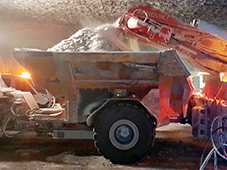
KIT Applied Geosciences is surrounded by active mining operation, covering geothermal with lithium extraction, oil, gas storage, fluorite and salt mining. Recently, DGGV representatives and Chris visited Salzwerke Heilbronn on June 30th 2022 to take some movies a few hundred meters underground. Salt hard rock mining started 1858 in Heilbronn and can continue some 100 years or more.
DGGV Imagefilm 2022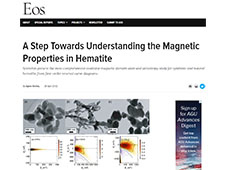
Agnes, Associate Editor of AGU's prestigious Journal of Geophysical Research: Solid Earth, published an editor highlight on A Step Towards Understanding the Magnetic Properties in Hematite. Scientists present the most comprehensive available magnetic domain state and anisotropy study for synthetic and natural hematite from first-order reversal curve diagrams.
Link zu Agnes Editorial Highliight 4/22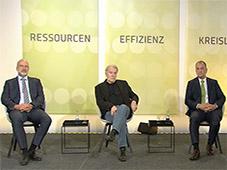
Our research on industrial resources strategies and resilient supply chains, followed by a podium discussion, are presented at the annual congress on resources efficiency Baden-Württemberg. The movie can be viewed here. This brings together about 2000 participants from industry, politics, associations and science. The booklet can be downloaded here.
The State Baden-Württemberg within the Federal Republic of Germany is one of the largest industrial hubs in Europe.
RessourcenEffizienz-Kongress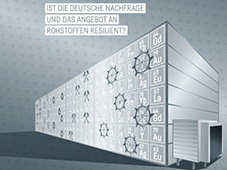
Our booklet " Is the German demand and supply of raw materials resilient? Mining - smelting recycling" (in German) by Christoph Hilgers, Jochen Kolb and Ivy Becker is online sind 12/2020. We outline raw material strategies of different countries and show that industrial countries require access to raw materials from mining, smelting and refining for manufacturing and to retain critical raw materials for the circular economy. Increasing global population, growing prosperity, shorter product life cycles, digitalization, energy- and mobility transition will cause a significant increase and competition on primary and secondary raw materials.
to ThinkTank Website